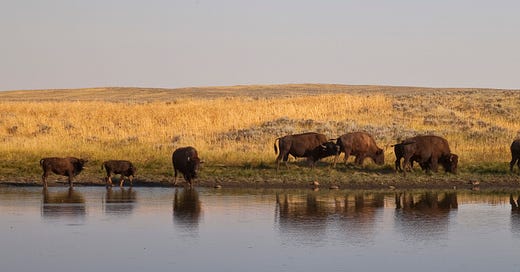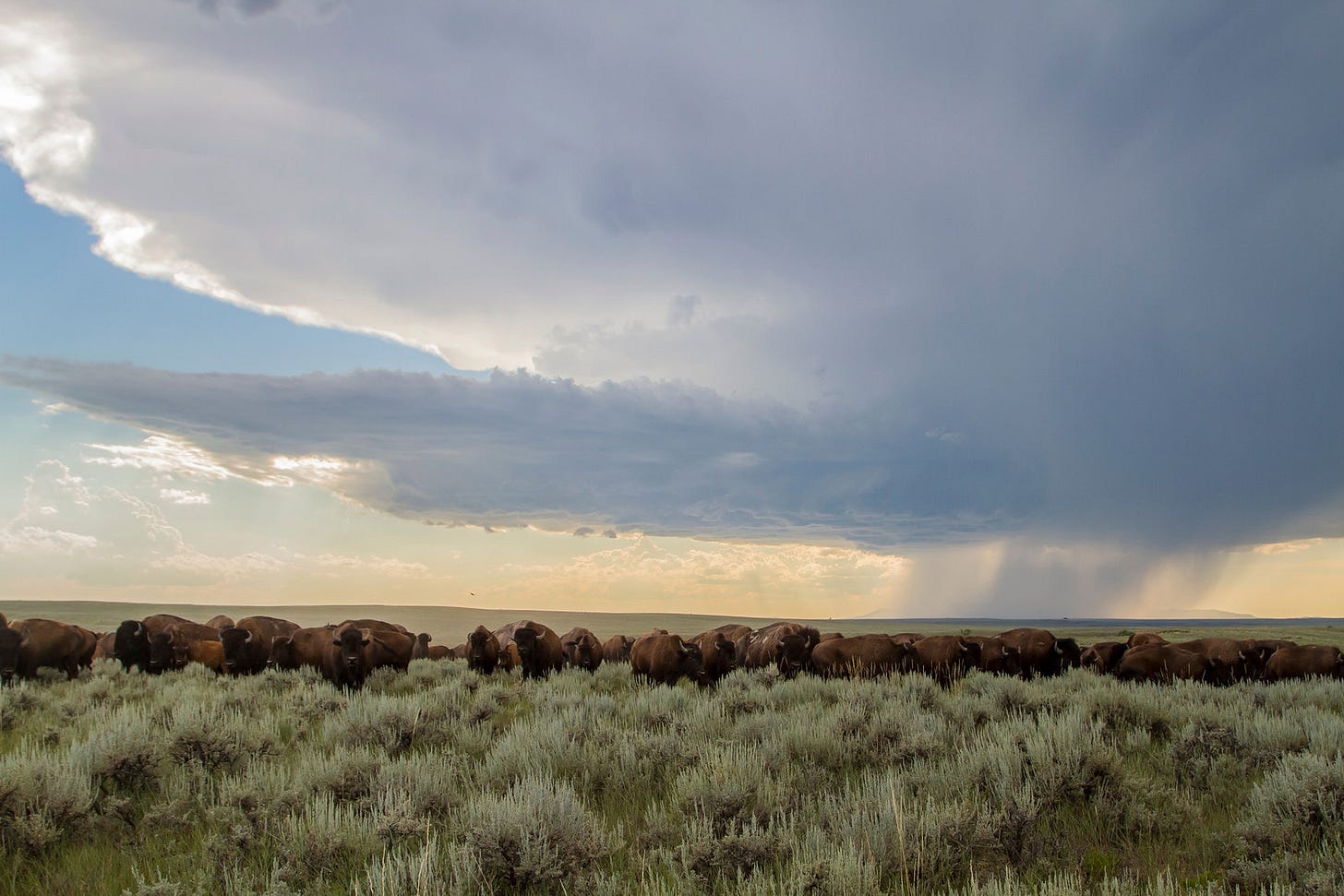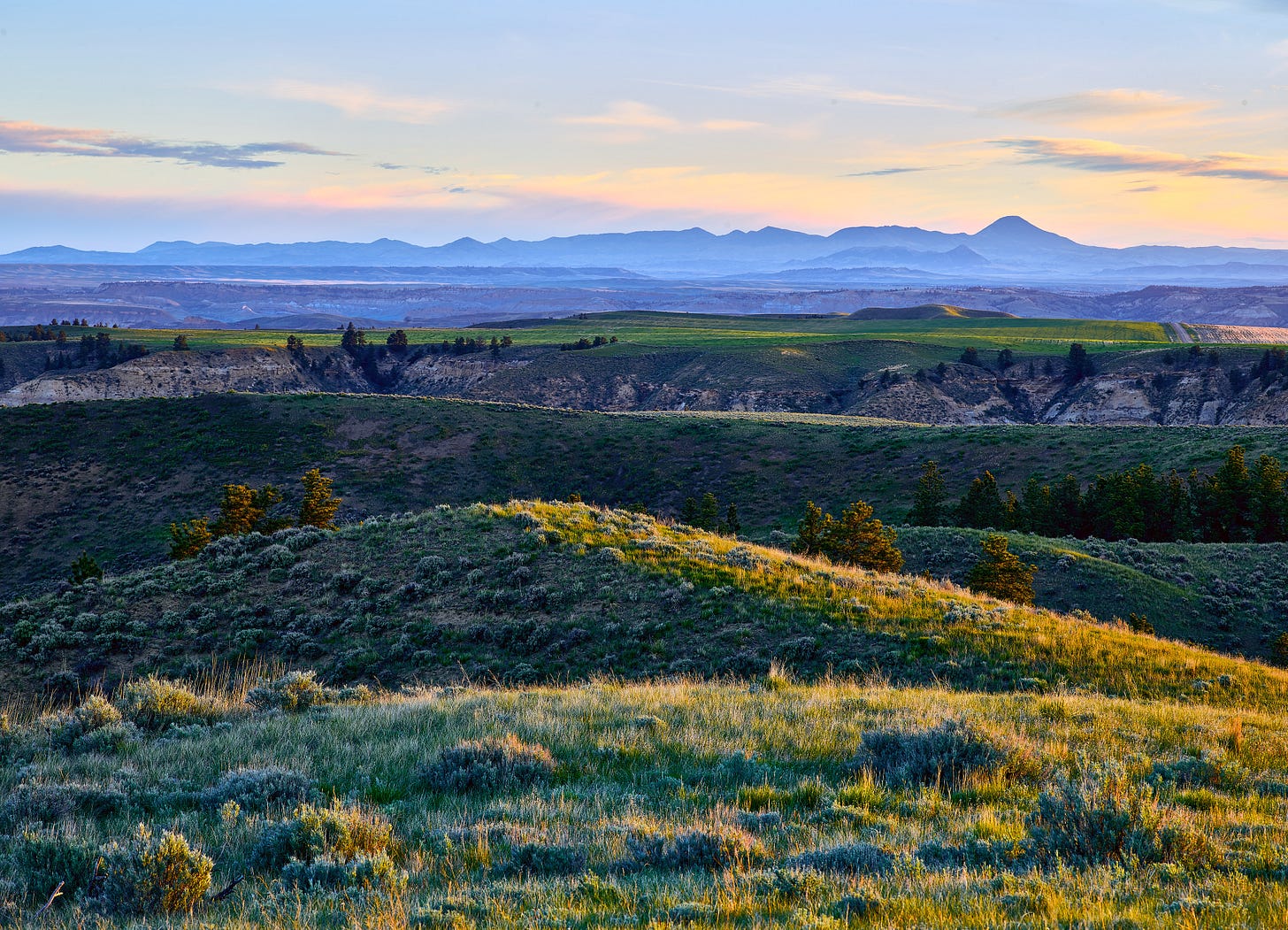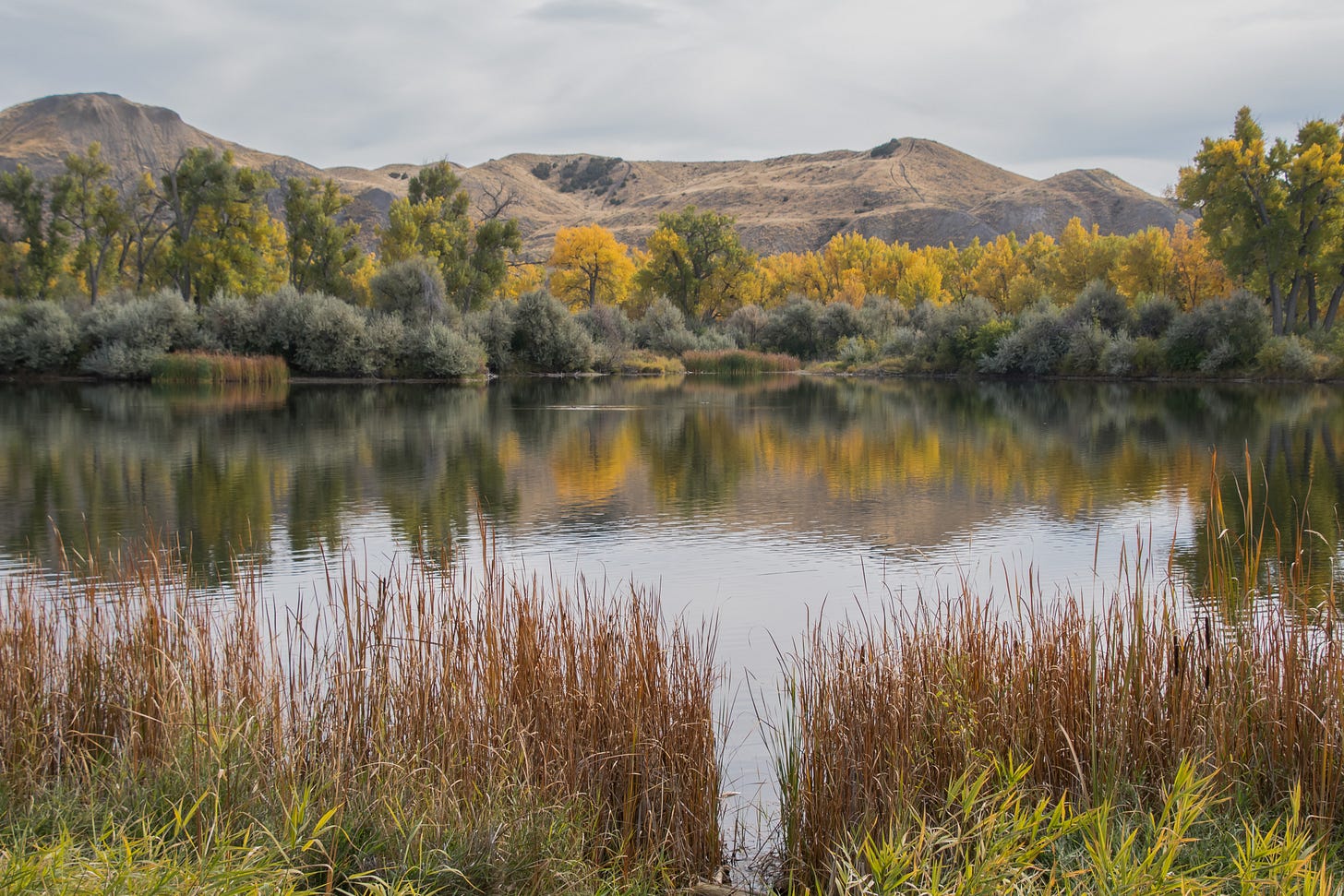Simple climate action // I S S U E # 4 9 // R E W I L D I N G
Americans think of the Serengeti as the quintessential wilderness. Backdrop to so many nature documentaries, Africa’s plains lives in our minds as nature’s last great redoubt. Few suspect North America has almost the same thing in its backyard.
The Great Plains still host almost every single species as when Native Americans first established their civilizations here thousands of years ago. Today, some of their descendents, alongside modern-day conservationists, are fighting to restore the Plains to their original glory.
By pulling together a mosaic of reserves across millions of acres, and returning species like bison to their original range, they are rewilding America’s grasslands—and perhaps its soul. Just ask jazz great Wynton Marsalis.
Join us this week as we explore the campaign to create the American Prairie Reserve.And while you’re here, we’d love it if you gave Hothouse a little love. We’re growing! People love climate journalism that inspires, and enables, us to take action. We’ve more than doubled our daily audience growth, and, with your help we're hoping to pick up the speed even more. Just pick your favorite action below and help the Hothouse community grow. Even the smallest of these actions can go a long way.
8 ways to support Hothouse today 🌤
Two is always better than one. Tackling the climate crisis is going to take community; start close to home:
A birdie told me you might like keeping the conversation going on Twitter:
Instagram is where we tell our visual stories. Like/join us there
You work on the climate already, and your colleagues will be so impressed to see you subscribe to such an awesome indie climate publication.
If you’re not already, consider becoming a paying subscriber…
…or gift a subscription to someone you know would make the most of Hothouse. A livable climate you say? Now that’s the greatest gift of all.
Leave a comment! Let us know what you like about Hothouse, what you hate, what you want to see more of, and anything in between.
Hit the ‘like’ button on Substack! Engagement boosts Hothouse’s visibility on the Substack platform, and greater visibility improves our ability to continue telling the best solutions stories to the greatest challenge of our lifetime.
Thank you in advance for all your support! We wouldn’t be here without you.
— Mike, Jemima, & Cadence
Big Conservation hits the Great Plains
Meet Tank the long-billed curlew
By Erik Ness
Tank the long-billed curlew is a wanted bird.
It’s late May on the high plains of Montana. At the end of a rainy week, Smithsonian Conservation Biology Institute (SCBI) researcher Andy Boyce is anxious to retrieve the tracking data from the largest female curlew in his study. She’s been missing in action for more than a year, but Boyce postponed re-capture because of the cold and wet.
Over the last year, Tank has flown all the way to Mexico and back without pinging a single cell tower. Just one fly-by and her tracker would phone home and download her complete itinerary. That she’s managed to hide is testament to an amazing flight. Once she’s fledged her chicks, she can ascend to 5,000 feet and reach the border in a single shot.
But Tank’s feathered family is in trouble. In 2019 conservation scientists warned of a “staggering” decline in bird populations since 1970. Grassland birds, like Tank, have fared the worst. “Habitat loss, climate change, unregulated harvest, and other forms of human-caused mortality have contributed to a thousand-fold increase in global extinctions,” the authors calculated.
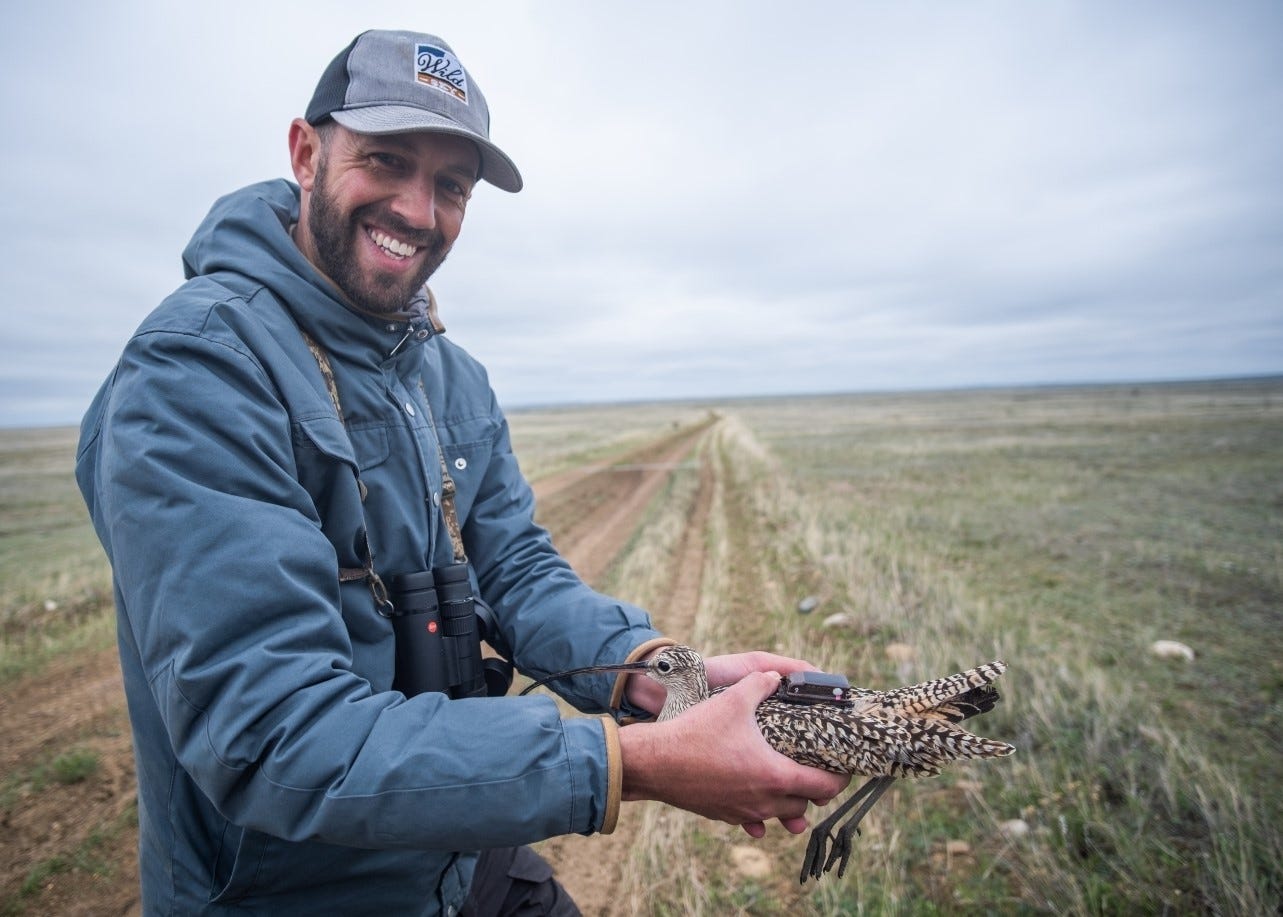
Species like Tank’s are the proverbial canaries in the coal mine. “Birds are noticing disturbances and degradations that we wouldn't otherwise detect,” says Boyce. “They tell us when there's some small but important link in these processes that's fallen off.”
The Great Plains have undergone significant transformation since the bison were hunted off almost 150 years ago. In the Northern Great Plains Steppe, the most immediate threats to the remaining grasslands come from overgrazing, fire suppression, and encroaching development for crops, housing, and energy. Climate change, too, but it’s harder to measure. Prairie species may be less sensitive to those extremes because wild temperature swings and cycles of drought and flood are a natural part of the system.
The real climate connection here is that prairie conservation is both a vessel of hope and a tool for the future. Intact native grasslands are some of the best carbon-storing ecosystems we have. And this area of Montana, where it’s possible to imagine that Lewis and Clark just trekked over the sweeping horizon, has some of the largest remaining tracts to have escaped the plow.
Prairies show us that climate repair and biodiversity repair go hand in hand. Prairies might not store as much carbon as a forest, but it's a much more stable repository. Unlike forests, the vast majority of prairie plants live underground; roots routinely burrow 20 feet into the soil. When fire rages, the surface burns away, while most of the plant remains undisturbed underground. Over time, this cycle has built the plains’ rich soil. So it's a smaller carbon piggy bank than a rainforest, but potentially far more secure.
The decline of species like the long-billed curlew suggests it will take more to save them in the 21st century.
Private Investment for the public good
In 2001, Sean Gerrity, an internet consultant who spent part of his childhood in Great Falls, Montana, was driving with a biologist friend through the Northern Great Plains Steppe after a camping trip. Conservation groups had recently identified the landscape, an ecosystem of mixed-grass prairie and pine woods larger than the state of California, as a high conservation priority. Gerrity doubted Montana would embrace a call for even more government land, but he had another idea. He would assemble one of the world’s largest nature reserves, over again the size of Yellowstone, using his business connections and fundraising skills. He soon began recruiting private donors to fund the first installment for a planned 5,000 square-mile range of protected prairie.
The necessary ingredient was large swathes of intact—if degraded—grasslands. Grazing rights for some public lands could be leased and large chunks of private land were coming up for sale. American Prairie has now purchased more than one hundred thousand acres outright and leased another 315,000 acres of federal and state land. The parcels have been chosen to connect land already under federal protection — the 1.1 million-acre Charles M. Russell National Wildlife Refuge and the Upper Missouri River Breaks National Monument — and the Fort Belknap Reservation.
“This landscape is amazing,” says SCBI landscape ecologist Hila Shamon. “And one reason that it's so amazing is because it hasn't been tilled yet.” The mixed-grass prairie here owes a little bit to both the eastern tallgrass and western shortgrass, and, as a result, is richer biologically than either. Plenty of rugged country breaks up the grassland with canyons, glacial remnants, and small mountain ranges. But mostly it’s vast and unobstructed. Depending on the time of year you could be swallowed in a sea of white, green, or wheat blonde. And, of course, that big sky.
As a park, the American Prairie Reserve is largely undeveloped, though it’s opening a new visitor center in Lewistown, Montana in September. You can camp, hike, mountain bike, and even ride horseback across this spartan landscape. Visitors can seek out wildlife like bison, elk, and prairie dogs or paddle the Missouri River to get a sense of how Lewis and Clark traveled.
American Prairie has a 200-year plan. Only 20 years after starting, it’s already one-sixth of the way to meeting its goal. The fast start suggests this big-vision model may be a useful catalyst for similar projects elsewhere. But the big plans are also generating big opposition.
Beef with bison
Gerrity hoped American Prairie's plan to buy land from willing sellers would disarm local resistance. But opposition arose, particularly around the plan to use bison to restore and rewild the prairie.
American Prairie ecologist Daniel Kinka argues that bison are needed to restore the ecosystem by reclaiming their role as ecological engineers. Their natural grazing behavior — alongside managed fire, flood, and drought — would reshape the prairie across broad sweeps of space and time. That’s the system that built the prairies in the first place, and will ultimately enhance their carbon storage and biodiversity potential.
“[Bison] are managing the bad haircut of the prairie,” says Kinka. “That's where the biodiversity comes from. That craziness of bison grazing as they see fit makes a very heterogeneous mosaic from what would otherwise be a very homogenous prairie. That structure, that landscape can only exist when you're talking about very, very large scales. I think the prairie, more so than any other ecosystem, needs to be big enough to allow for that volatility.”
But volatility is perhaps not the right talking point for a region in economic duress. And so bison have become a political flashpoint in Montana. Bumper stickers and yard signs declare: “Save the Cowboy, stop the American Prairie Reserve.” Ranchers argue the bison pose an existential threat to their livelihoods: they’re powerful enough to destroy fences, and can carry brucellosis, which causes stillbirth in cows. The animals are so divisive that the state’s governor Greg Gianforte recently put a 10-year moratorium on even considering a new state bison herd.
The key rewilding question for American Prairie—and the Great Plains in general— is whether bison (or cattle managed like bison) can restore native prairie once it’s protected. The essence of regenerative grazing is to stock high densities of animals and move them around often, techniques built upon watching bison and wildebeest engineer their native grasslands. “The soil carbon sequestration in most pasture livestock situations using these regenerative grazing practices are storing far more greenhouse gases in the soil than they are emitting,” argues Mark Ritchie, a grazing ecologist at Syracuse University. While feedlots are a climate negative, regenerative agriculture advocates insist well managed, grass-fed cows sequester carbon by building soil (Studies continue because this is exceptionally difficult to measure).
But Ritchie, who has measured grazing systems for 25 years, believes the data consistently show well-managed grazing delivers carbon benefits — even if those benefits per acre might be small.
On the Reserve, that just means thinking bigger and longer. Most importantly, it means stopping the destruction of what remains. “Its greatest offer is in not being cultivated,” Oklahoma State University grazing specialist Samuel Fuhlendorf. “If you keep it right side up, that keeps the most carbon in the soil.”
Piece by piece
American Prairie has been running bison for less than 20 years and now has more than 800 head across more than 26,000 acres. You can better see their impact at the neighboring Fort Belknap Indian Reservation in northern Montana. Beginning with just 50 head used strictly for ceremonial purposes in the 1970s, the Aaniiih and Nakoda nations at Belknap have more than 1,000 head today.
Piece by piece, species are returning along with the bison. Mike “Gopher” Fox is now a tribal council member and wildlife director on the Fort Belknap Reservation, but has also worked on tribal bison restoration across the West. He tracks what he calls the lucky dozen: a personal watch list of species including burrowing owls, rattlesnakes, badgers, coyotes, and pronghorn antelope. Over time, he’s seen the bison pasture host more and more of them. “There is definitely more wildlife,” Fox says. “Many times I've seen all twelve.”
And species off his list are returning as well. Belknap, for example, is a release site for the diminutive nocturnal swift fox, making a comeback after disappearing from Montana in the 1960s. With the bison also come species of dung beetles that prefer to bury bison dung instead of cow pies. These are the finely-tuned instruments that cycle carbon. Who knows what else we’ll find as the pieces fall back into place?
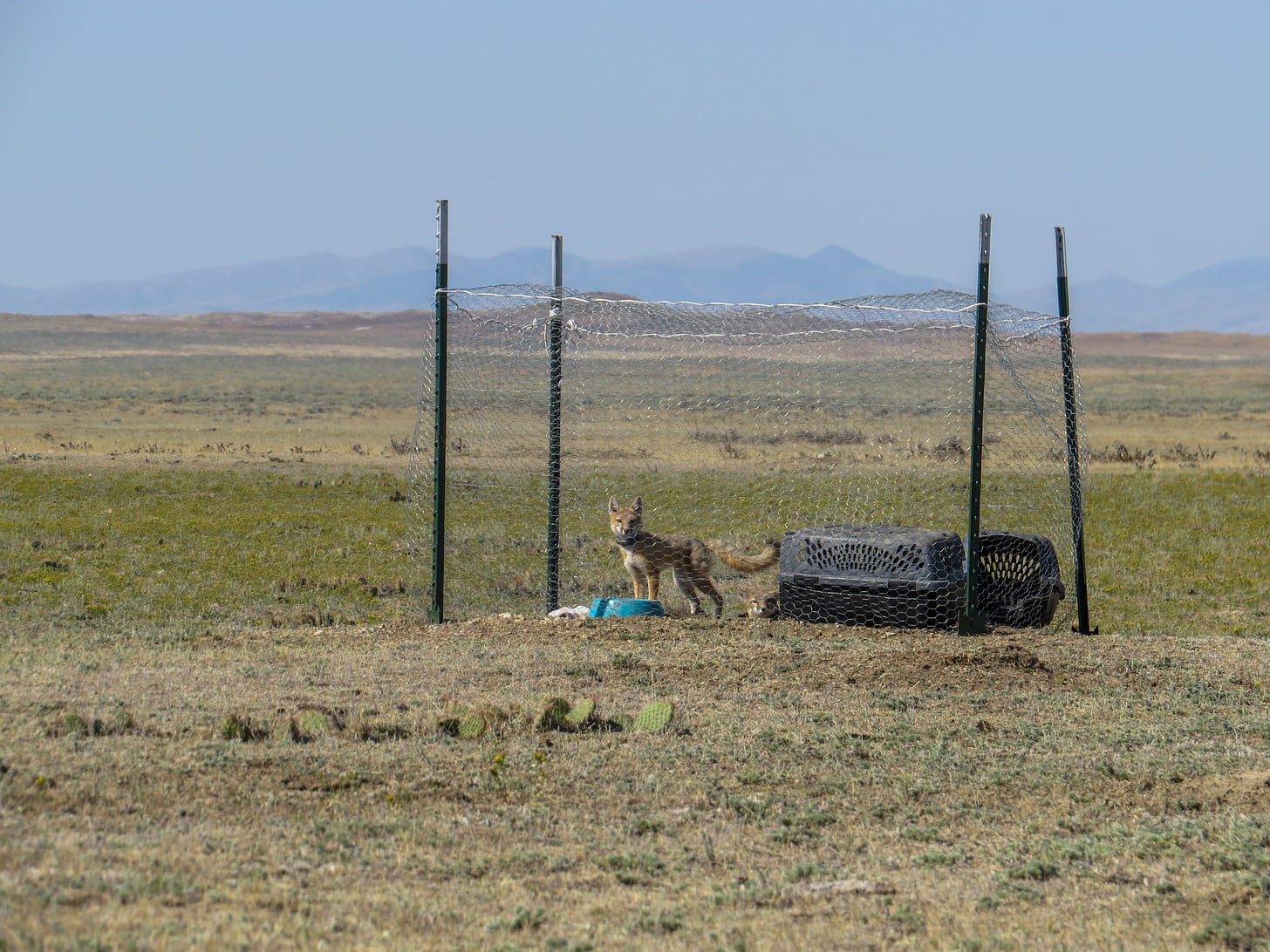
American Prairie ecologist Daniel Kinka loves the take on rewilding that jazz great Wynton Marsalis delivered when he received the Ken Burns American Heritage Prize from the conservation organization. “I love the term rewilding,” said Marsalis during a virtual ceremony this May. “It sounds like something benign and dangerous, safe and reckless, well behaved and unruly. It is truly New Orleanian. Rewilding introduces you to the better self you forgot. It is a nourishment and it’s a healing.”
“Leave it to a jazz musician to provide what I would argue is one of the better definitions,” says Kinka. He wants Americans to build a cultural memory of the wild prairie as they restore the physical one to some semblance of its original grandeur. Instead of conjuring up the African Serengeti, Kinka wants to hear America’s own poetry ring across one of the world’s most majestic wide open spaces. “I want to invoke images of bison, and bighorn sheep, and grizzly bears and wolves and black-footed ferrets and swift fox and black-tailed prairie dogs and all of that indigenous biodiversity for us in North America,” he says. “The problem is nobody remembers that, no white people remember that.”
He may get his wish. What’s remarkable about the Great Plains is that, except for the Rocky Mountain locust, every major player in an ecosystem that thrived for 12,000 years is still around. When humans step back, the wilderness can return. “We have the same ecosystem that can be put back together,” Kinka says. “Let's just rebuild that.”
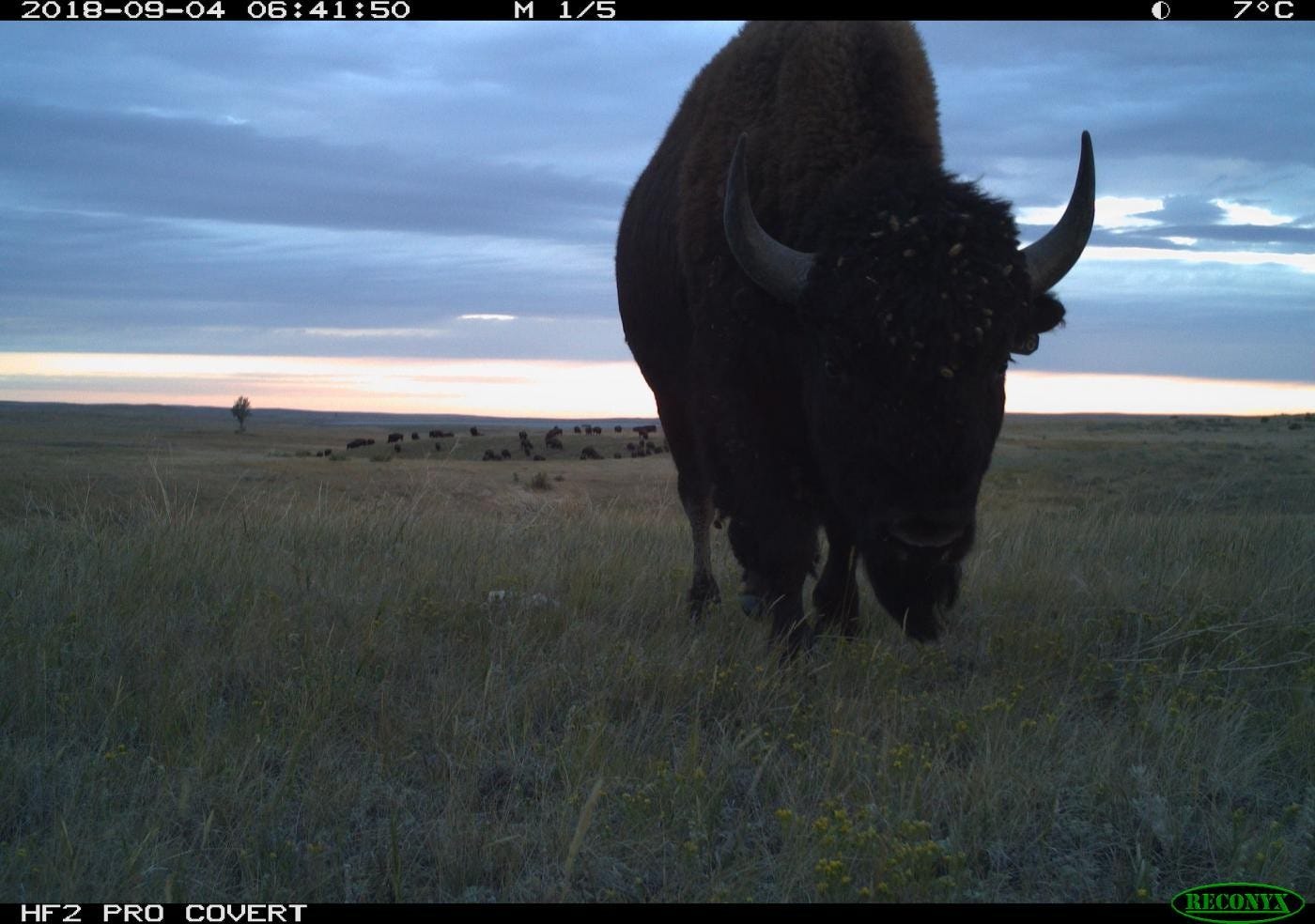
Like what you’re reading? Share Hothouse with a friend (or many)!
Hothouse is a weekly climate action newsletter written and edited by Jemima Kiss, Mike Coren, and Cadence Bambenek. We rely on readers to support us, and everything we publish is free to read.

